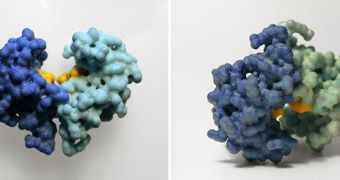There's a lot of trial and error involved in the development of treatments, regardless of disease, but tissues don't exactly grow on trees, so biochemists and medics can't go nuts on their samples. 3D printed proteins might help make up for that though.
Biologic Models, an outfit based in Brooklyn, New York, has been experiencing a rise in demand for its physical models of proteins and molecules.
Because even though they can't be used for experiments, they do provide visual perspective to aspiring medics. Especially when it comes to training undergrads and doctors-in-training. Scrubs as it were.
Being able to see how hemoglobin works has proven really useful, because it can help figure out more about diabetes, how it works and, eventually, how to cure it completely.
Doctors should also be able to use protein models (models showing protein structures, nut models made out of proteins) to their patients. It will allow the latter to realize what an impact an illness can have, and why therapies can help.
Of course, the doctors themselves will have to figure out on their own how to relay the information without it going over the heads of everyone in the vicinity. Molecular chemistry isn't exactly the easiest subject to talk about.
Biological Models is currently offering Hemoglobin A1c (HbA1c) teaching models as part of a kit that also includes a pair of teaching models: normal Oxygenated Hemoglobin (Hb), and Glycated Hemoglobin A1c (HbA1c).
The comparison between the two, between the controlled/uncontrolled glucose metabolism, explains diabetes. The price of the full HbA1c Educational Kit is $425 / €310, or $1,000 / €730 if you also want another 3D printed molecule (selected from the RCSB database and created in SLA resin, transparent).

 14 DAY TRIAL //
14 DAY TRIAL //